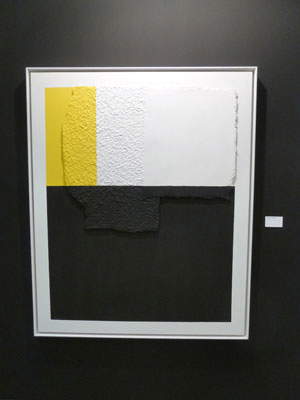The article you are reading in my translation originally appeared in the Spanish magazine Descubrir el Arte: by clicking here you can read the original, by Sara Valverde. It is an interesting contribution to understanding the reasons why art galleries are trying to increase their presence in contemporary art fairs. Happy reading!
On the last day of DonostiArtean, we interviewed the director of the Asturian Van Dyck Gallery, Aurora Vigil-Escalera, who explained the new lines of conduct of gallery owners and why they aspire to participate in contemporary art fairs.
After these years of economic crisis, the culture sector and especially the art market have been heavily affected both in the number of sales and in the number of visitors to galleries. Therefore, gallerists have had to take matters into their own hands and renew themselves, to enhance the circulation of the artists they support, aiming more and more to participate in art fairs, where there are generally five thousand people a day.
 |
| A DonostiArtean pavilion |
The director of the Van Dyck Gallery is also keen to participate in these cultural events: the goal is to popularize and enhance the work of the artists represented and to find new possible collectors. In a fair, which normally lasts four or five days, you have the opportunity to make your artists known and sell their works in a short time. For this reason, Aurora Vigil-Escalera believes that today fairs occupy a fundamental role in this sector.
Despite this, the increase in Spain ofVAT to 21% has caused a big problem for Spanish gallerists who participate in international art fairs, since customers prefer to buy a Spanish work in a foreign gallery rather than in a domestic one, this leads to cut-throat competition causing us a lot of damage points out Aurora Vigil-Escalera.
 |
| Rafael Canogar’s work from the Van Dyck Gallery. |
For 2015, Van Dyck Gallery hopes to continue its planned projects, such as participating in two national and two international fairs. In addition, it will continue to support young people through anannual exhibition, held on August 15, supported by established artists such as Rafael Canogar, who through a retrospective of his work in the same gallery, also helped introduce works by emerging artists.
Warning: the translation into English of the original Italian article was created using automatic tools. We undertake to review all articles, but we do not guarantee the total absence of inaccuracies in the translation due to the program. You can find the original by clicking on the ITA button. If you find any mistake,please contact us.